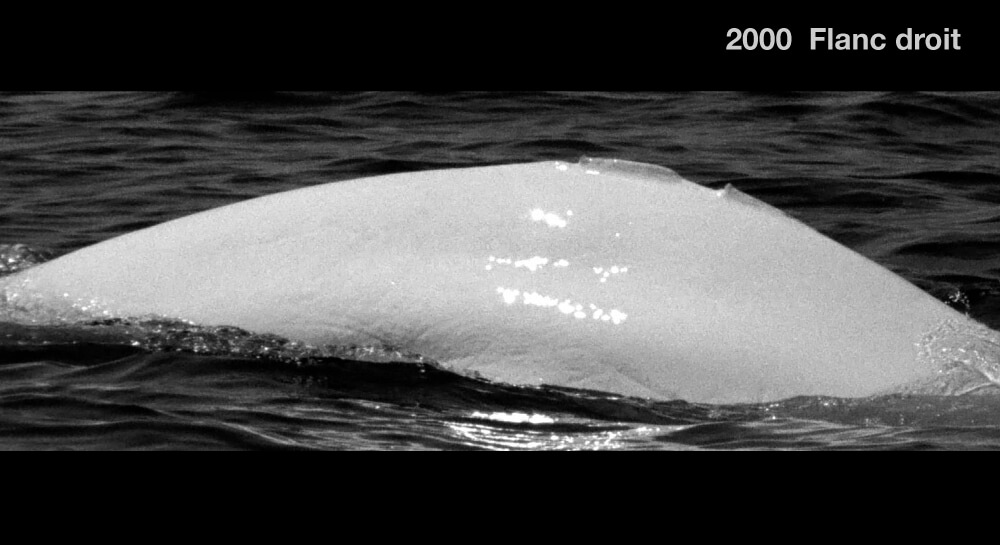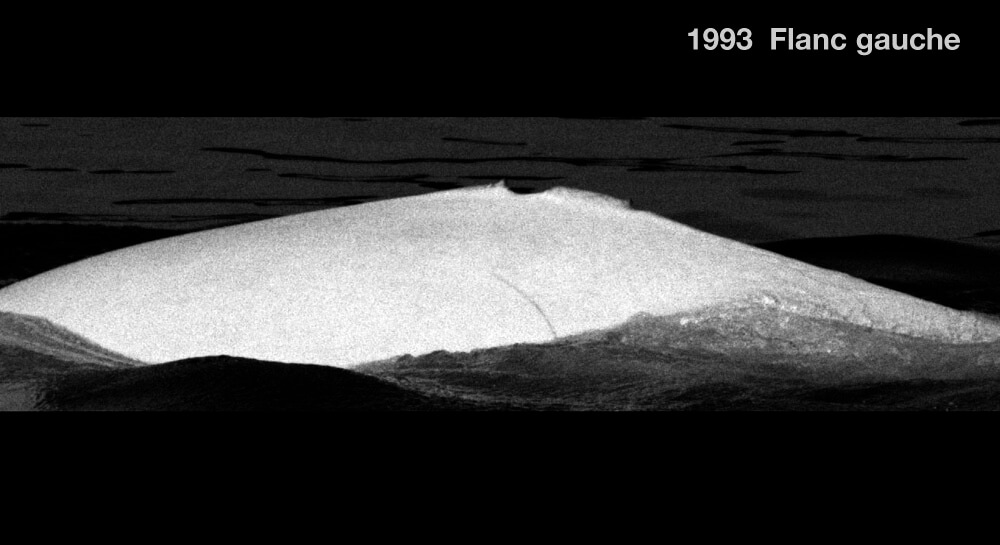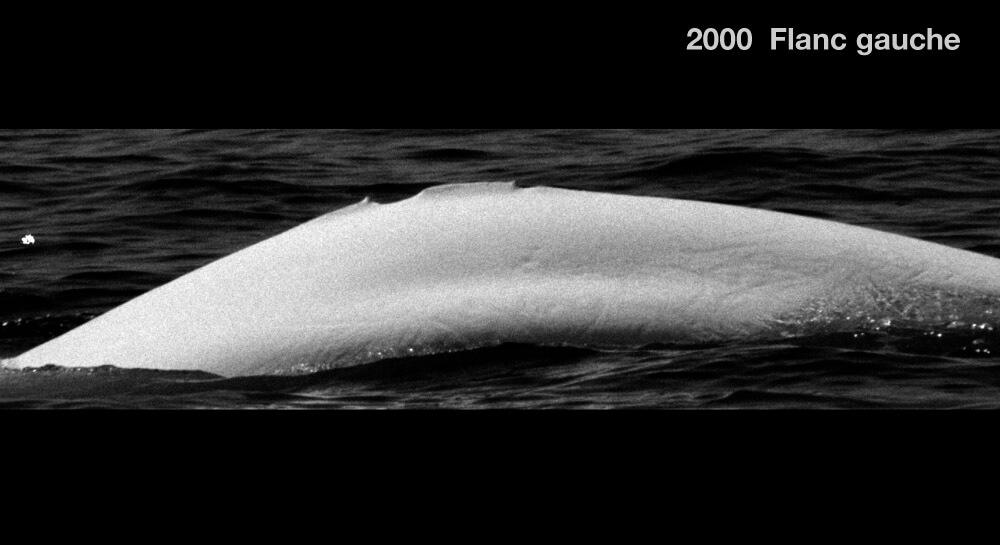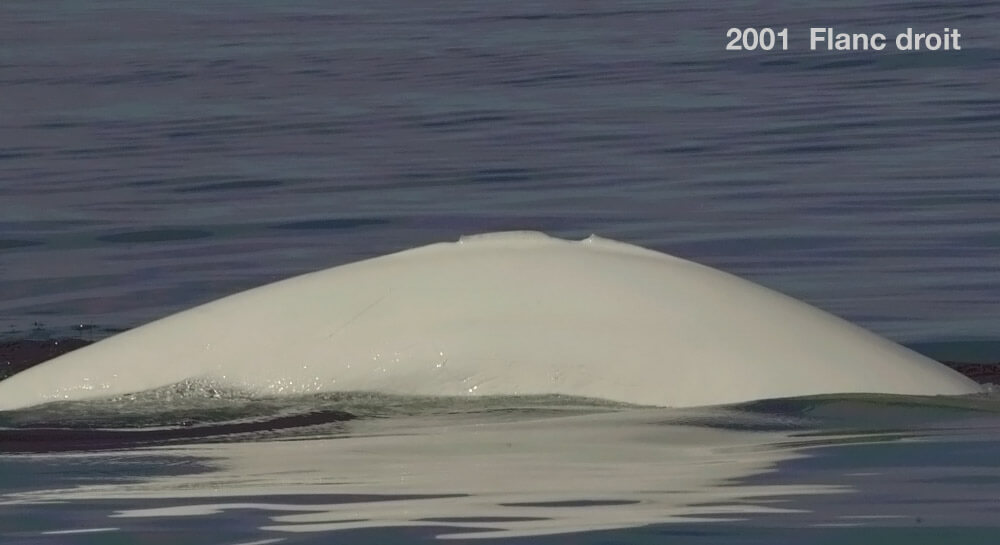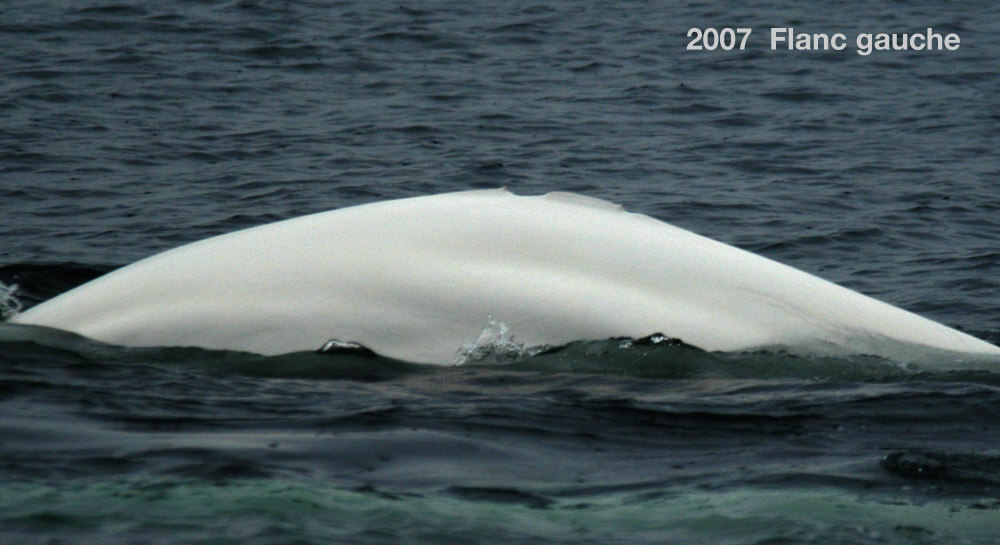Ultra
Beluga

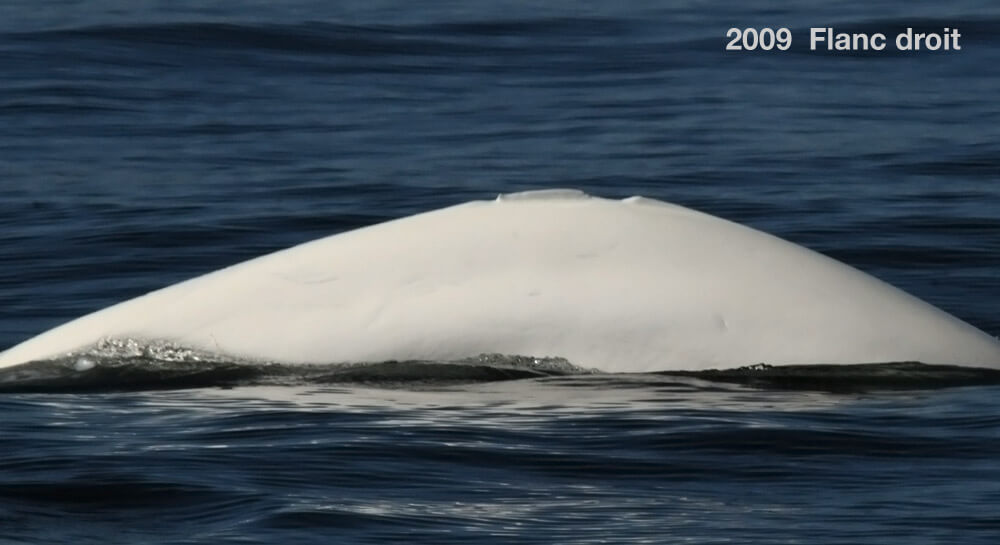
Adopted by Les Trails du Saguenay-Lac-St-Jean
-
ID number
DL0058
-
Sex
Male
-
Year of birth
Before 1980
-
Known Since
1992
Distinctive traits
With two deep scars in his dorsal crest, Ultra is easy to identify. The scar located on the hind portion of his dorsal crest has changed a few times between 2007 and 2009.
Life history
When we first encountered Ultra in 1992, he was already entirely white. Belugas fade from gray to white in colour between the ages of 12 and 16. Ultra would therefore have been born before 1980.
His sex was confirmed by genetic analysis of a biopsy taken in 1994 : Ultra is a male. In fact, this was one of the very first biopsies taken from a free swimming beluga. Ultra paved the way for an important research program that continues to this day and which has enhanced our knowledge not only of belugas’ social lives, but also of their diets and their exposure to contaminants.
Like other adult bulls of the population in summer, Ultra spends most of his time in herds composed essentially of males. Three networks of males are known : two of these navigate the Saguenay Fjord and the head of the Laurentian Channel, while the third one, the “Downstream Boys”, also uses the head of the Channel as well as the downriver portion of the Estuary, but avoids the Saguenay. Ultra has never been observed in the Saguenay to date. This is also the case for Louveteau and Marinis, two other males with whom Ultra is regularly spotted.
As the years pass by, males have a tendency to form stable groups of companions. These associations are established gradually and may play a role in belugas’ reproductive lives.
How Ultra’s story unfolds will teach us volumes on the evolution of belugas’ social lives. By better understanding how belugas live, we will better be able to protect them.
Observations history in the Estuary
Years in which the animal was not observed Years in which the animal was observed
Latest news
Under dark clouds and surrounded by a fine mist, we observe DL0058 at the mouth of the Saguenay. He is in a herd of about 60 individuals. Despite working conditions made challenging by the weather, we count five large groups of ten or so individuals. The animals head toward the Prince Shoal Lighthouse, which dominates the mouth of the Saguenay Fjord.
Then, after spotting a porpoise carcass, we must briefly interrupt our photo-ID work. We immediately contact Marine Mammal Emergencies (1-877-722-5346), but the carcass is not very fresh and has already begun to decompose. The Parks Canada team nevertheless decides to recover the animal and will investigate the cause of mortality.
Sponsor
Les Trails du Saguenay-Lac-St-Jean adopted Ultra (2021).

